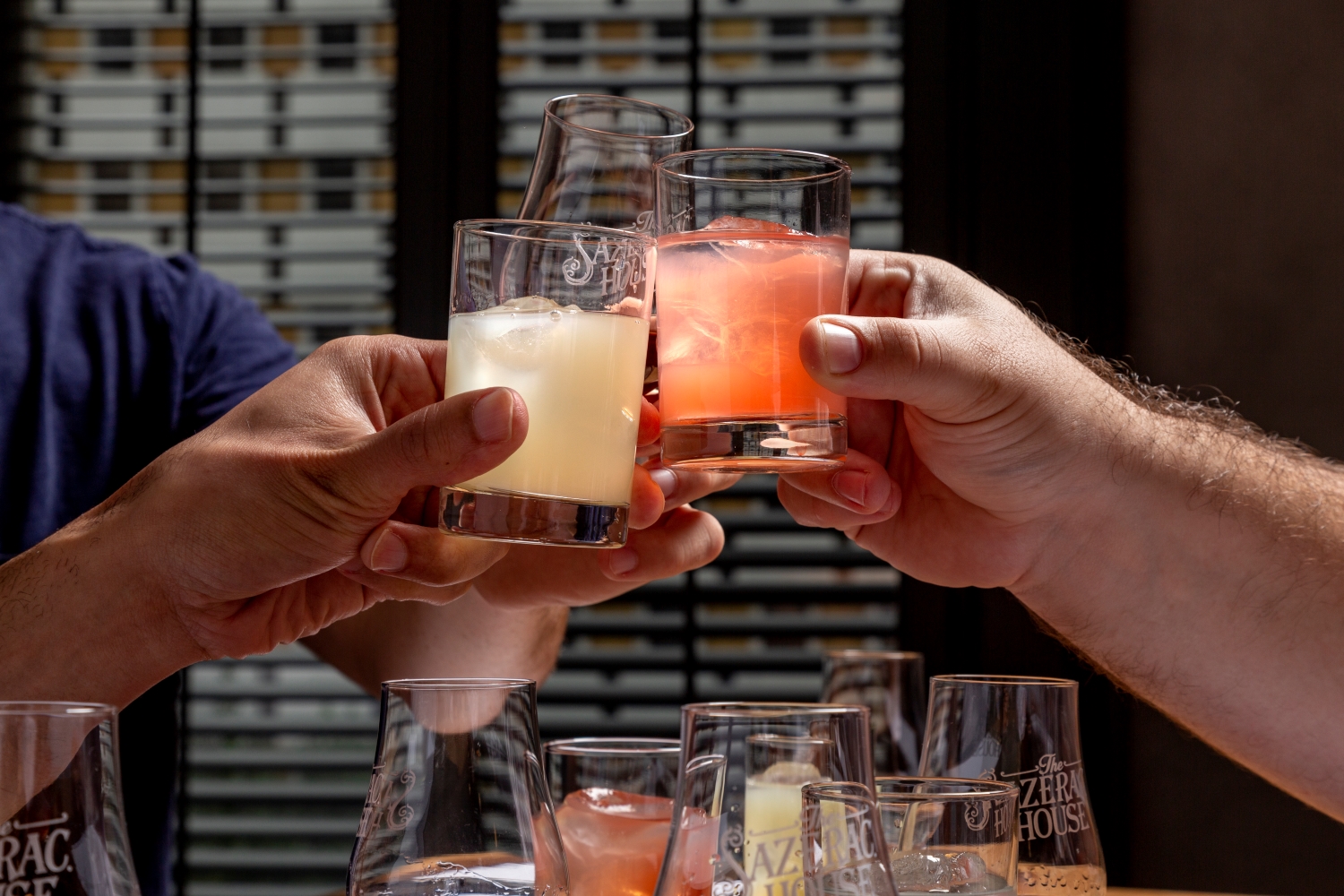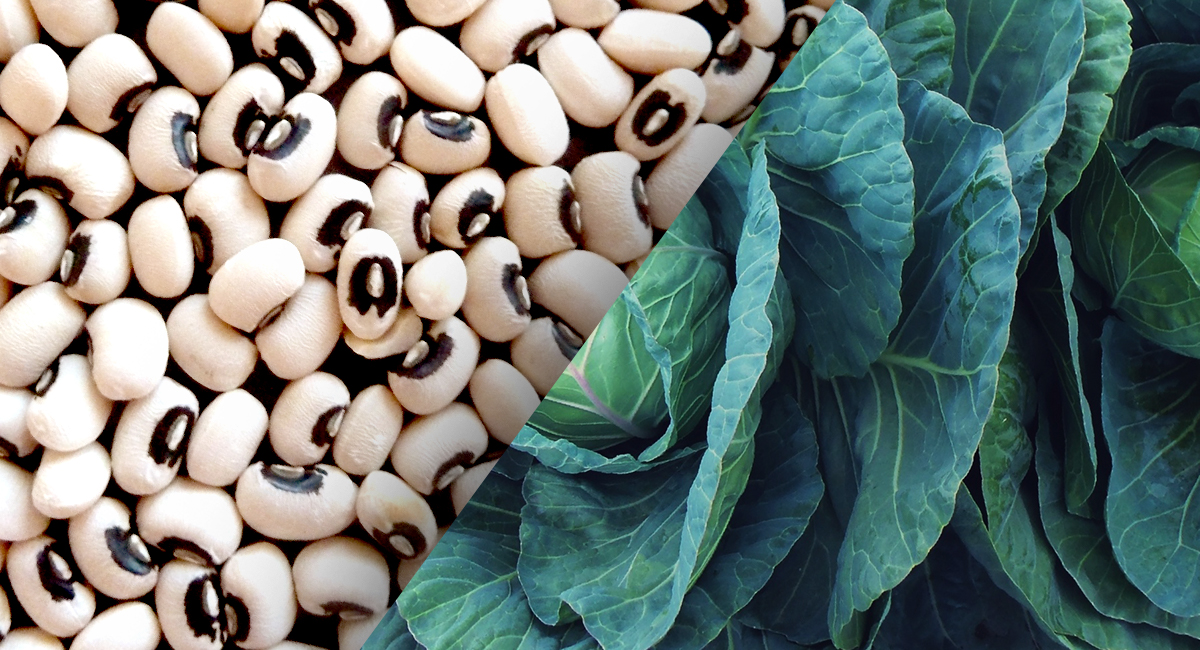2020—it’s been real!
In a year where uncertainty was the only certain, it’s safe to say that we’re all terribly, terribly ready to pour some champagne, pop off a few fireworks, and ring in a socially distant, yet defiant 2021. It will be an unconventional New Year’s Eve—we’ll party on Zoom and dance on living room floors for midnight countdowns in sharp contrast to the revelry we had imagined for ourselves. And, still, there’s hope for a traditional New Year’s Day—with hangovers, hairs of the dog, and hazy recollections of the wild night before, and, of course, black-eyed peas.
As Southern traditions go, eating black-eyed peas on New Year’s Day is sacrosanct. For one day, we exalt this simple legume from pantry staple to center stage and, for the unindoctrinated, it can be a bit much to swallow. Alas, once you understand the symbolism, it’s easy to appreciate its importance to Southern culture.
For over 1,500 years, and long before we added hambone and rice to the recipe, black-eyed peas were served on New Year’s Day for good luck. Historically, the tradition originated around 500 A.D. in celebration for Rosh Hashanah and the Jewish New Year and was carried forward by Sephardic Jews as they settled the American South in the early 1700s.
According to legendary Southern food researcher John Egerton’s Southern Food: At Home, On the Road, In History, the custom of preparing and serving black-eyed peas on New Year’s Day is tangentially related to its “mystical and mythical power to bring good luck.”
Who wants symbolism? There’s plenty to go around.
Foundationally, eating black-eyed peas is said to represent humility and a lack of vanity as echoed by the expression, “Eat poor on New Year’s, and eat fat the rest of the year.†Creatively, there’s the notion that dried beans loosely resemble coins and when cooked their expansion represents expanding wealth.
In the South, we even extract meaning in what we serve alongside black-eyed peas. There’s collard greens, the color of dollar bills, to ensure prosperity in the new year. There’s cornbread, the color of gold, for wealth, and for health, there’s tomatoes you stew. Better yet, cook your black-eyed peas with a new dime or penny, and whoever is “lucky” enough to receive the coin will have the most luck of all.
We could exhaust hours interpreting the varied symbolism of eating black-eyed peas on New Year’s Day and make a day of the myriad ways to serve them, but who has time for that? We have plans to make—midnight toasts with glasses of Aperitivo Spritzes, singing Auld Lang Syne with Sazerac Ryes, and waking up bleary-eyed with Bloody Marys. So, as we gussy ourselves up to bid adieu to what has been a tremendously challenging and often disheartening year, let’s take heart in these traditions that bring us closer, lift our spirits a bit, and give us all hope for something good just around the corner.
Happy New Year!
Events

The Weller Classroom Experience
Step into the story of one of bourbon’s most enduring families and discover how William Larue Weller helped pioneer the wheated style that would later inspire the Van Winkle legacy. This guided tasting explores four expressions—Special Reserve, Antique 107, Full Proof, and 12 Year—tracing Weller’s journey from the days of the Stitzel-Weller Distillery through the industry’s quiet decades of the 1970s and 1980s to its modern revival under Buffalo Trace. Guests will nose, taste, and compare each whiskey in an elegant classroom setting, uncovering how proof, age, and history intertwine to shape the signature richness of Weller and the heritage of American bourbon. 21+ only.

Hosting the Holidays Class
Raise your spirits with a guided holiday cocktail experience that blends festive fun with the rich history behind classic drinks like the Espresso Martini, French 75, and Milk Punch—each with a seasonal twist. Perfect for a cheerful date night or for mastering cocktails that will wow your friends and family at your next holiday gathering. 21+ only.

Spirit of Sazerac: A Holiday Shopping Experience
Step into the Spirit of Sazerac and kick off the holidays with a spirited evening of sipping, shopping, and seasonal cheer! From 5:00–7:30 PM, browse our pop-up holiday boutique filled with festive gifting ideas and cocktail gift sets. Don’t miss our live cocktail demos featuring this season’s signature creation at 5:00, 5:30, 6:00, and 6:30 PM. Come raise a glass, find your perfect holiday gift, and enjoy a little Sazerac sparkle.

